SAUDI ARABIA TOUR REPORT - APRIL 2024
This was a thoroughly enjoyable tour tracking down all of the available Arabian specialities on offer, as well as witnessing some great migration, along with some pretty cool shorebirding! We began in the desert about 90 minutes north of Riyadh, and although Arabian Lark was not present we did see White-crowned Wheatear, Trumpeter Finch and a good varity of northbound migrants. Seeing flocks of Blue-cheeked and European Bee-eaters passing overhead, and passerines seeking shelter in the shade of the odd acacia or beside small pools of water included 2 White-throatd Robins, Rufous-tailed Bushchat, Whinchat, Menetries's Warbler, Red-throated Pipits, and other more common migrants. A short flight to Al Baha in south-west Saudi Arabia saw us birding the wonderfully forested slopes and narrow valleys of Al Khaira Forest Preserve where after much searching we found Arabian Grosbeak. This area also produced great views of Philby's Partridge, Arabian Scops Owl, Arabian Woodpecker, Arabian Wheatear, Arabian Babbler, Yemen Thrush, Yemen Linnet and Arabian Serin. There was also a fine supporting cast that included Red-knobbed Coot, African Olive Pigeon, Bruce's Green-Pigeon, Montane Nightjar, White-browed Coucal, Levant Sparrowhawk, Little Rock Thrush, Gambaga Flycatcher, Black Scrub-Robin, Arabian Warbler, Brown Woodland Warbler and Palestine Sunbird. Moving south to Tanomah we had several close views of the Saudi endemic Asir Magpie, and eventually found a group of Arabian Partridges. And, as always, we enjoyed stunning views of Arabian Eagle Owl. A short drive took us to our next base at Abha and we headed straight for the Habala Plateau, seeing migrating Marsh Warblers and Thrush Nightingales at our picnic spot in the shade of some trees. The spectacular escarpment nearby gave us great views of displaying Rufous-capped Larks, whilst nearby Buff-breasted Wheatear and a large flock of Yemen Serins were much appreciated. A pre-dawn start the next day to the spectacular Raidah Preserve is always good for a sprinkling of Afro-tropical species and it gave us the hoped for endemic race of Black-crowned Tchagra, along with African Grey Hornbill, Dusky Turtle-Dove, Grey-headed Kingfisher, White-throated and Arabian Bee-eaters, a pair of Shikra and Arabian Sunbird. We then had a few nights in the far south-west corner of Saudi Arabia aound Abu Arish and Jizan, where some truly epic birding awaited us. The coast is one of the best places in the world for getting close views of Crab-Plover and we saw A LOT! Shorebird migration was in full swing, with flocks of Broad-billed Sandpipers being noted and a great variety of other species. We did eventually track down a colony of the much-wanted Arabian Golden Sparrow, thanks to some gen from another tour company, saw the previously reported Wire-tailed Swallows (a 1st for Saudi), spotlighted Nubian Nightjars, saw Singing Bushlarks and spectacular Nile Valley Sunbirds, along with a flock of Lesser Flamingo's, the never-to-be-split avicenniae race of Common Reed Warbler that only breeds in the mangroves of Saudi's Red Sea coast, as well as 'Mangrove' White-eye. Passerine migration at Corniche Park was in full swing with a great selection of shrikes, chats and warblers. However, the undoubted highlight of our time here was a trip out to the Farasan Islands where we had outstanding views of Sooty Falcon, one of the sexiest raptors in the world! We cruised by numeorus islets in our small boat that were covered in hundreds upon hundreds of seabirds that included many White-cheeked & Bridled Terns, more Brown Boobies than we've ever seen in one place and we even found Goliath Heron and Pink-backed Pelicans. Saudi Arabia really is a fantastic birding destination and we can't wait to return in 2025.
PRE-TOUR: SOUTH OF RIYADH -AL HAI'IR WETLANDS
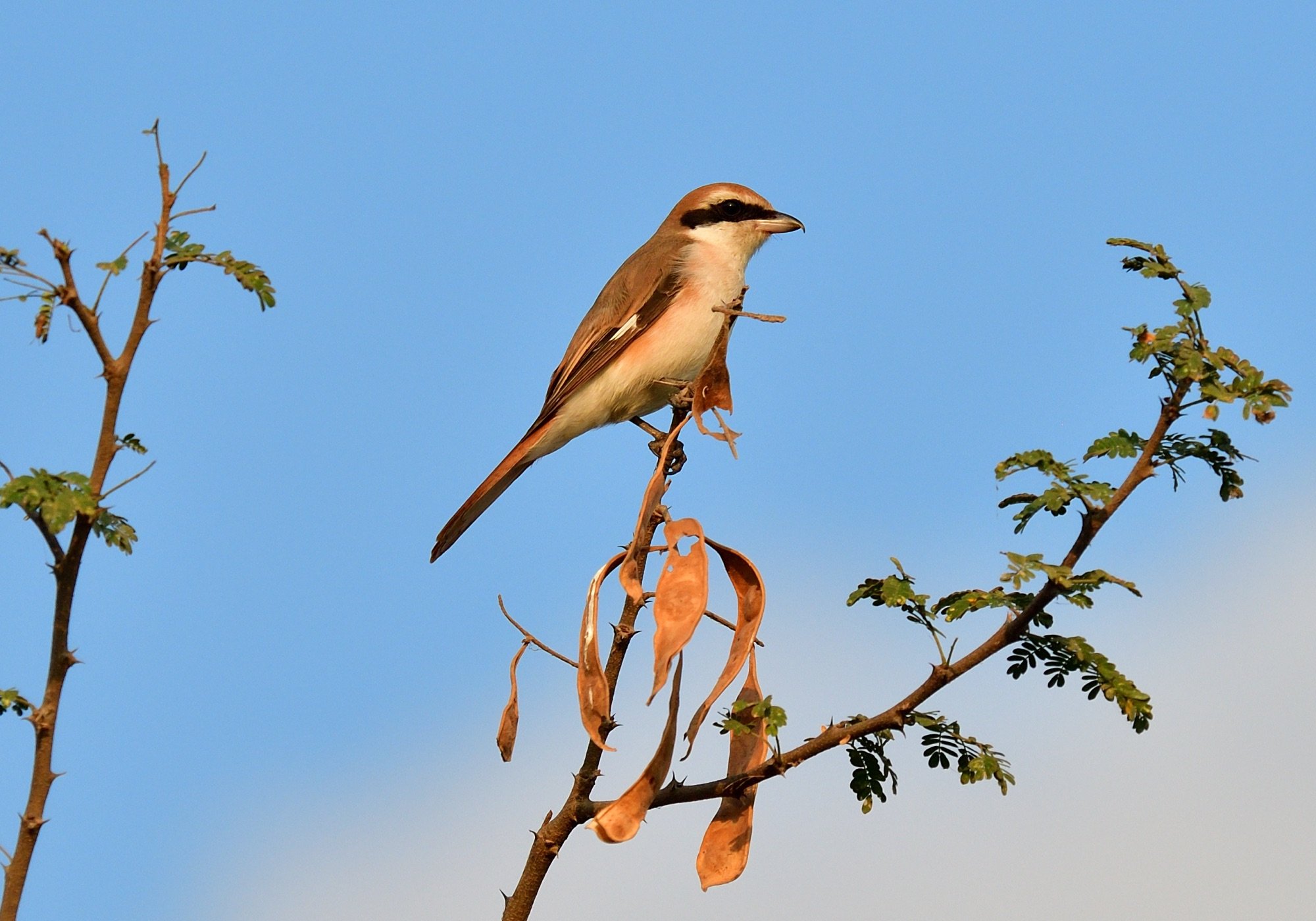
I had the opportunity to visit Al Hai'ir this afternoon after collecting our rental car. It's only an hour from the hotel in Riyadh and I was surprised to find an area of marsh, small lagoons and reeds. Amazing! This is where Basra Reed Warbler sometimes breeds, and despite a couple of hours searching all I had were numerous Eurasian Reed Warblers. But it's a great area and after roughly 25 inches of rain here this year, the main channel was full of water... An adult and immature Purple Heron flew over, along with a Western Cattle Egret and the odd Pallid Swift, whilst trackside bushes held Common Chiffchaff, Willow Warbler and a fine Eurasian Wryneck. I also had a brief glimpse of a sylvia warbler that eluded identification, and a Turkestan Shrike was seen distantly. Several Arabian Green Bee-eaters were also present,. along with many White-eared Bulbuls. However, I was particularly pleased to get 3 Saudi ticks: Red Avadavat, Indian Silverbill and Streaked Weaver! Yay!!
Not a bad 2 hours birding and I only wished I had longer! So I have 4 hours sleep tonight before starting our Saudi Arabia trip in the deserts north of Riyadh......



Day 1: RAWDAT NOURAH - JEBEL TOWKI

At 9am we'd been awake 5.5 hours!! And boy it felt like it, but the excitement of birding in the desert was exhilarating. Maybe 20+ Greater Hoopoe Larks were the highlight, some being very, very close, but several Bar-tailed Larks were also pretty cool. Both Blue-cheeked and European Bee-eaters were streaming north on migration making for a spectacular sight, whilst a female Western Marsh Harrier had other ideas and was heading south! We'd been searching for 5 hours for the elusive, mysterious, enigmatic, nomadic, unpredictable and flipping annoying Arabian Lark..... Needless to say it remains invisible and the news of zero sightings for 2.5 months continues..!!!
But the best birding was an hour away in a narrow wadi. A small pool attracted an Ortolan Bunting, and some lush grasses proved enticing to 6+ Willow Warblers and a female Menetries's Warbler. But the standout species was White-throated Robin, two of which we found without too much effort.
Add to this Rufous-tailed Bushchat, Red-throated Pipit, Barred Warbler, several Spotted Flycatchers & Common Redstarts, a few White-crowned Wheatears, Brown-necked and Fan-tailed Ravens, Whinchat and even a Trumpeter Finch were all much appreciated. So not a bad day!



DAY 2: AL BAHA - AL KHAIRA FOREST PARK
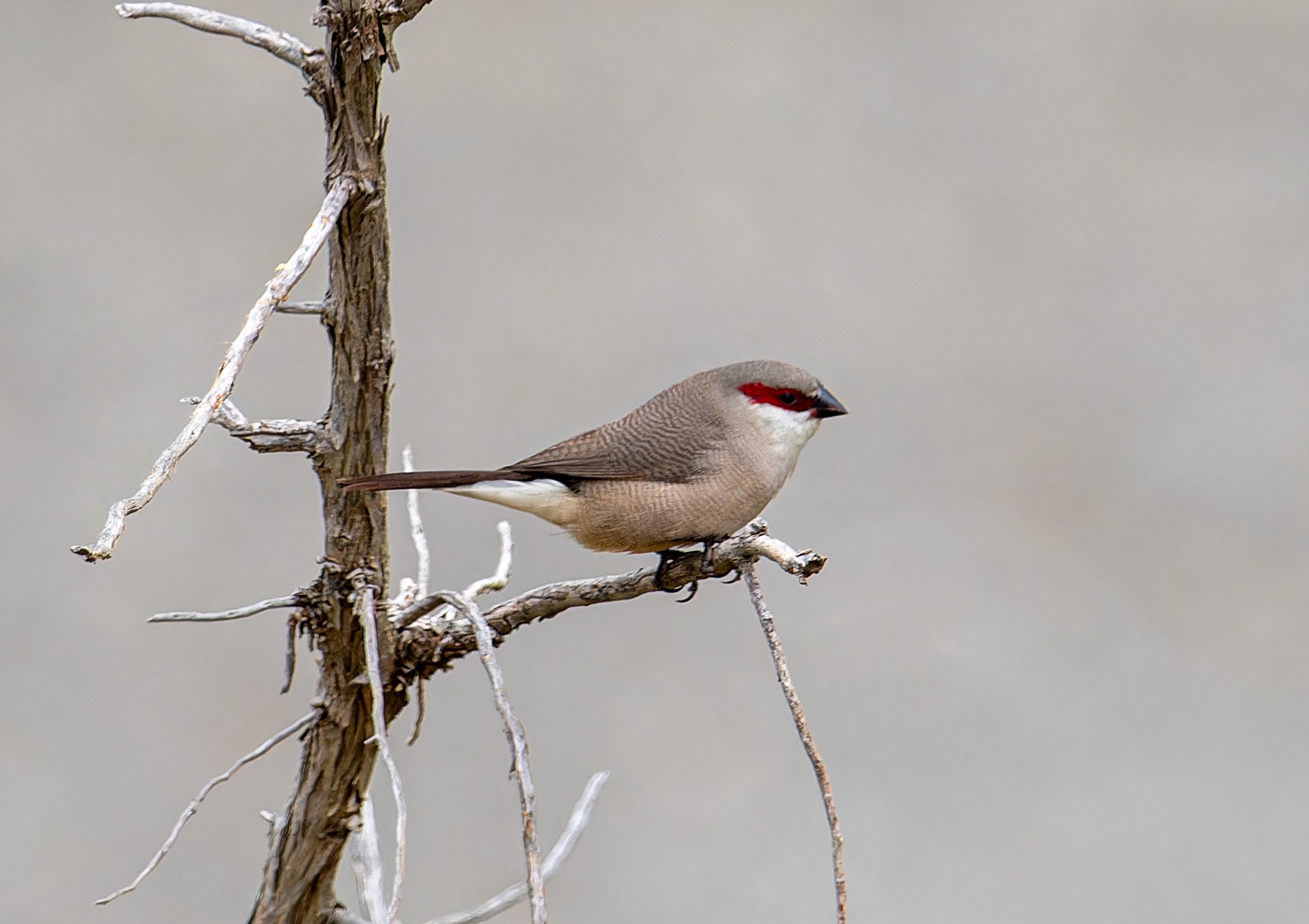
Took the early morning flight to Al Baha, where a surprisingly quick car rental procedure saw us on the road for 50 minutes to Al Khaira Forest. In the city we spotted a group of 6 Ortolan Buntings on the rocks beside the traffic lights we were stopped at. It was a bit windy and getting quite warm by the time we arrived at a nice vegetated wadi where we scanned the Juniper clad slopes for an hour. Things were a little slow to begin, but we eventually picked up Eurasian Hoopoe, Yemen Thrush, Arabian Serin, Brown Woodland Warbler, Abyssinian White-eye, Little Rock Thrush, Arabian Wheatear, Palestine Sunbird, Ruppell's Weavers and a Cinnamon-breasted Bunting. A nice little selection and we'd see most of these species again during the day. At the next stop, a pair of Arabian Warblers showed very nicely indeed on the slope just below us, but better yet was the pair of Arabian Waxbills giving stunning views.
At 2pm we drove back in to Al Baha to check-in to our apartments, seeing a cracking Masked Shrike en-route, and have a nice coffee before returning to Al Khaira Forest. This time we explored the dam where a pair of Red-knobbed Coots was a surprise. There were better views of Olive-rumped Serin and more gorgeous views of the waxbills, but amazingly an Arabian Scops Owl began calling at 4.30pm and we managed to track it down and even scope it!
It's always nice to get an owl in daylight. We ended the day eating Arabic food, local-style on the floor of a restaurant near our hotel.


DAY 3: AL BAHA – THEE AIN ANCIENT VILLAGE

We left at 6am and drove for 20 minutes to the narrow valley we visited yesterday (2200m). The sun was just starting to creep over the surrounding hills as we arrived and the temperature was very pleasant indeed. The valley reverberated to the sound of birdsong, with all the usual culprits adding their input to the dawn chorus. Our first good bird was Philby's Partridge on the hillside above us. And it took several hours of hard scanning before tracking down a single Arabian Grosbeak in the valley below us. This is undoubtedly the best place in Saudi Arabia to find this bird, and even so it's not easy. We also saw Eurasian Hoopoe, a superb Arabian Woodpecker, a pair of Arabian Warblers, Yemen Thrush, Spotted Flycatcher, Little Rock Thrush, several Arabian Wheatears, some more Arabian Waxbills, 2 Long-billed Pipits, Olive-rumped Serin, Yemen Linnet and Cinnamon-breasted Bunting.
We moved on to another valley and I was really surprised to see a Levant Sparrowhawk circling above us. We saw another one a little bit later in another valley, along with another Arabian Woodpecker, and thankfully our first Gambaga Flycatcher - from looking at eBird this is the earliest recorded Spring arrival in Saudi Arabia (and we saw 2 in the same valley!!). A little later we had another Gambaga Flycatcher, along with another Arabian Woodpecker.
We spent the early afternoon down at 700m at Thee Ain Ancient Village, driving through incredible scenery to reach it. Here, we notched up Bruce's Green Pigeon, Arabian Babbler, Black Scrub Robin, Arabian Sunbird and 4 African Silverbill. It was so hot here that we decided to return to the hotel (just 35 minutes away) and have an hour off to rest and shower before heading out at 6pm to try for Arabian Eagle Owl.
This was a no-show, although some confiding Arabian Babblers were pretty cool, but in my opinion the crippling views of a Montane Nightjar perched on a dead tree, flying right over our heads and circling us was much better! And to cap it all off, we had a pretty good dinner in an Egyptian restaurant to round of a very successful day.

DAY 4: AL BAHA - TANOMAH

We packed up and left the rather drab building that had pretensions of a hotel and drove for about an hour to a nice valley with a few houses dotted around. It was really like going back in time with small grassy fields and hedges and the valley was full of birdsong. We were hoping for Arabian Partridge but drew a blank on that, but we found some really great birds starting with an African Olive Pigeon perched on telegraph wires. A White-browed Coucal was picked up by Keith and was scoped, as were 4 Red-throated Pipits on telegraph wires and a Marsh Warbler took a while to reveal its true identity (if you get my meaning??). There was also another Levant Sparrowhawk, a couple of Ortolan Buntings and all the usual suspects. On the way out there were two Bruce's Green-Pigeons on telegraph wires over the road.
Leaving here we then drove a couple of hours to Tanomah and continued on to Wadi Dahna, where our two targets of Yemen Warbler and the Saudi endemic Asir Magpie were seen easily. There was also a female Violet-backed Starling, many Blackcaps and Common Redstarts moving through on migration, European Bee-eaters flying over, and both Flava & Feldegg Yellow Wagtails.
After checking in to the hotel we headed to Al Mahfar Park and waited until dark when an Arabian Eagle Owl duly showed very well and we heard several Montane Nightjars and a Desert Owl in the distance too. So we returned to the hotel for dinner after a thoroughly enjoyable day with a great group and chew over the day's sightings.

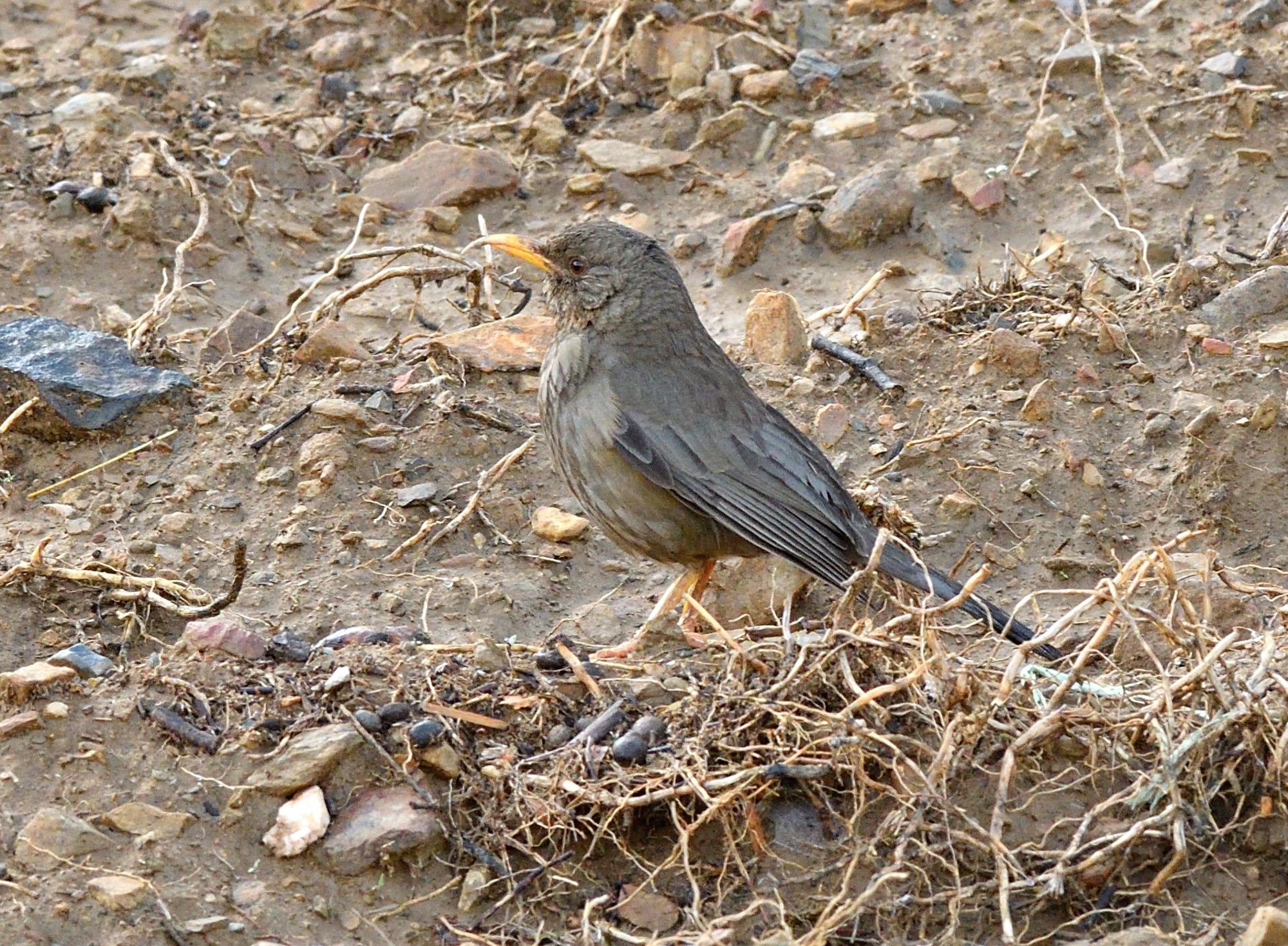
DAY 5:WADI DAHNA – ABHA – HABALA PLATEAU

Heading out at 6am we had a couple of hours to find Arabian Partridge before breakfast and departing for Abha. Our first stop drew a blank, so we returned to Wadi Dahna and scanned from a different location resulting in decent scope views of Philby's Partridge - it's such a stunning bird but ' not the drone we were looking for...' (get the Star Wars analogy?). Anyway, we drove around to Wadi Al Gathal and immediately had the most co-operative and inquisitive Asir Magpie that stalked us the entire time we were here, calling repeatedly. The sound after an hour's continuous calling really was like nails down a chalkboard! Anyway, eventually we heard Arabian Partridge in the distance and hiked down lower into the wadi. It was at this point that a really loud local bird photographer approached us and scared the partridges into silence. Apparently he could show us Asir Magpie if we wished, pointedly ignoring the raucous calling of a magpie about 15 feet away from me! Once pleasantries were exchanged, along with phone numbers we continued searching for the elusive partridge. Sure enough, after a lengthy scan Keith spotted a partridge on the skyline and there it was, Arabian Partridge looking stunning in the mighty Swarovski scope. In fact there were 3 of them and we watched them for quite a while, being really appreciative of our success after a tense morning's battle.
After breakfast back at the hotel we drove just under an hour and a half to Abha, and called into a supermarket to buy items for our picnic lunch. We survived more or less unscathed from some of the craziest driving it's been my misfortune to experience by the local population and finally turned off the highway onto more sedate roads where people drove a little slower and didn't seem intent on killing us! We ate lunch in the shade of some trees and walked around looking for migrants, the best of which was a Thrush Nightingale skulking in the biggest bush around, but there were also quite a few Common Redstarts, Willow Warblers, Blackcaps and at least 2 Marsh Warblers.
Leaving here it was just a few minutes to get to the rocky Habala plateau where it took maybe 30 seconds to nail Rufous-capped Lark, with one song-flighting right above our heads. We had it on the deck a little later as well and had good views. Our next target was Buff-breasted Wheatear and we pulled up at the gate of my spot but they were locked. Oh no! Disaster! But as I climbed up to look over the wall, I spotted one perched on a mound of earth and with a bit of judicious footholds on the wall everyone managed views of it. But there were no worries as another appeared behind us, and then a short while later another pair were found in a field and everyone enjoyed great scope views.
Our final target of the day was Yemen Serin, a very tricky bird I think in Saudi. Well, there's a tale about how we discovered a flock of over 30 birds feeding in the same field as the wheatears were in. But we didn't find the flock until much later, after Keith & Bart said they'd observed a few serin sp. feeding in bushes beside the road. We decided to check out the flock of serins a little later and after a confusing spell of initially seeing some with dark streaked crowns and malar stripes, we only saw paler birds without malars. After a while it was apparent that we were seeing juveniles as well as adults, and add to the mix a couple of Arabian Serins feeding quietly nearby, it took us a while to work out what was going on. But my, oh my, such a big flock of Yemen Serins was totally unexpected. I've only seen small groups in Oman, so to see such a number was pretty exciting. And that was our day. Dinner back in Abha, was at a nice Italian restaurant next to the hotel. Pizza baby!

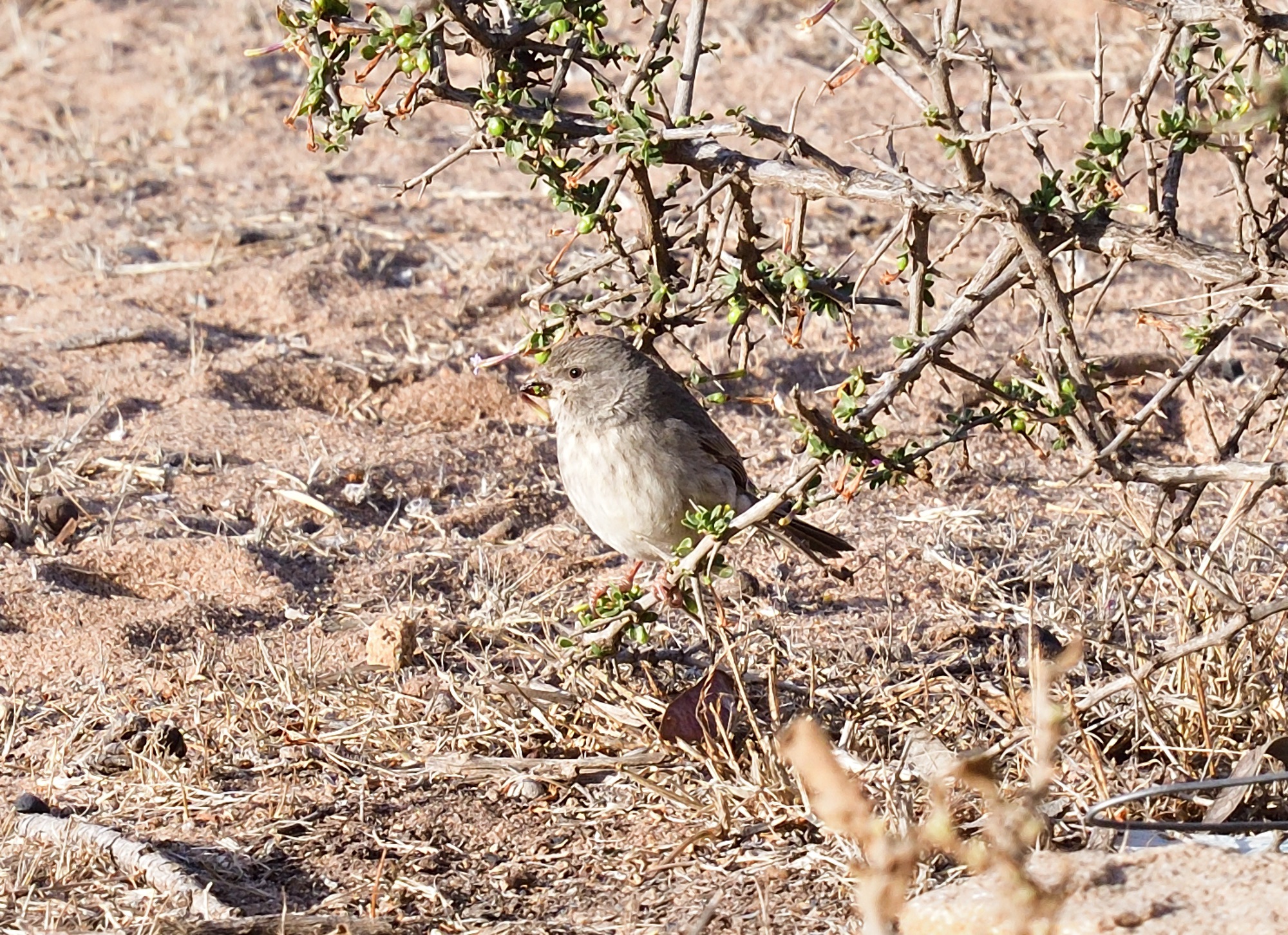
DAY 6: RAIDAH PRESERVE – JIZAN

Raidah Preserve is a very interesting site to visit.... Just for the extremely hair-raising drive down the steepest drivable tarmac road in the world and the return journey up is something else. Our journey down had a nice background of burning brakes and we had to stop half way down to let them cool off, but that happened to be at a spot for Black-crowned Tchagra, really our main target bird here as it's a potential split (possibly, maybe, who knows...?) Yet Raidah Preserve is full of birds and at 5.30am we were driving down the precipitous road, dodging Arabian Partridges along the way that simply wanted to walk out right in front of the car.
Anyway, we eventually found a tchagra but not everyone got on it, but there were some really great birds here such as African Grey Hornbill, Dusky Turtle Dove, White-throated and Arabian Green Bee-eaters, 2 Shikra, Grey-headed Kingfisher, Arabian Sunbird, more babblers, more Blackcaps, more Willow Warblers etc etc.
We returned to the hotel in Abha, loaded up and drove 90 minutes to an area 50kms north of Jizan to where a colony of Arabian Golden Sarrows had been present last month,. Disappointingly, the colony was deserted, but a search of the area revealed European Nightjar, Black Scrub Robin, Nile Valley Sunbird, and at some pools Red-throated Pipit, several Namaqua Doves, and other common species.
It was roughly an hour's drive south to Jizan in order to purchase tomorrow's ferry ticket to the Farasan Islands, which we made with 15 minutes to spare before the office closed! And then we hit McDonalds for a very late lunch and some cool air, as the temperature had soared to 48 degrees celsius! We reluctantly left here and drove up to North Corniche Park. Here the road runs alongside the Red Sea and there's plenty of parking. The tide seemed to be almost in but there was one area of exposed mudflats still uncovered and we were in wader heaven with 10+ Broad-billed Sandpipers, 37 Crab-Plovers, and a fine selection of other shorebirds such as many breeding plumaged Curlew Sandpipers, Tibetan Sandplovers, Little Stints and many commoner species. There was also a Gull-billed Tern, Caspian Tern, several Little Terns, an Osprey, some Pink-backed Pelicans and more.
At one point a couple of Broad-billed Sandpipers flew in and landed directly below us and we ended up with a pair of Crab-Plovers feeding really, really close in front of us with the setting sun creating some magical lighting to end another action-packed day in Saudi Arabia.


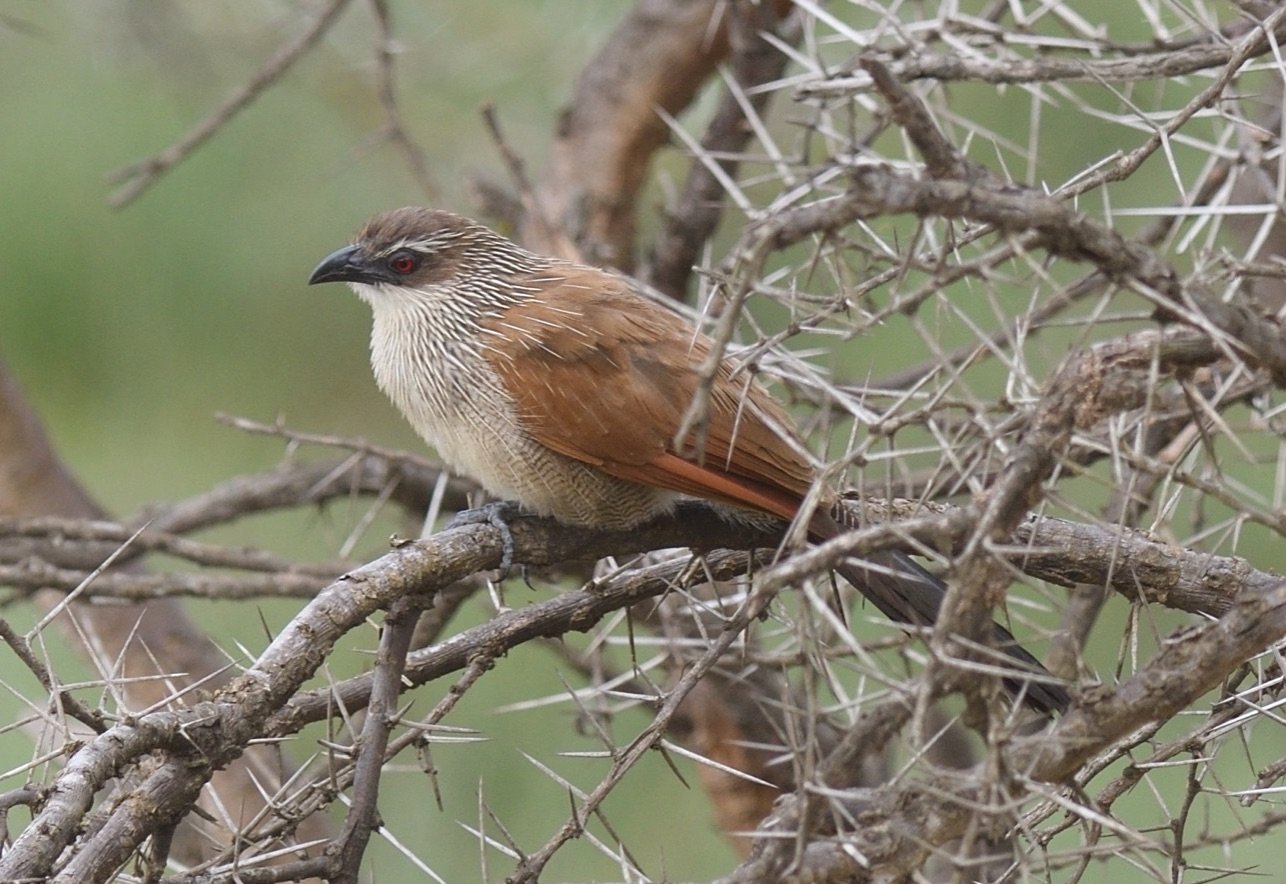
DAY 7: FARASAN ISLANDS

It hurt waking up so early this morning. My alarm sounded like Big Ben chiming inside my head at 03:30am and I fumbled around the apartment trying to figure out where my gear was. Clothes on, bins, scope, camera, batteries, baseball cap, car keys, sandwiches, flasks of hot water.... I did boil the kettle right? Think, i've got everything then realise i've left the milk in the fridge.....! Eventually everything came together and the 5 of us left at 4am, reaching the port at 4:50am. We weren't totally sure as to the procedure but it all worked out and we boarded eventually, after the car was x-rayed via a large truck carrying an x-ray machine.... Yeah i know! So we got some seats by the windows on the right hand side of the ship, with some of us standing to look out of the one window that was reasonably clean and you could see out of. Couldn't go to the left side of the ferry as that was female only!!! The ferry left a little later than the scheduled 7am and we were off.
Pretty quickly we were seeing numerous terns flying by, with several large flocks. Most of them seemed to be White-cheeked, but the odd Lesser Crested and Greater Crested Terns joined in. And the boobies..... Man, there were stacks of them, We passed numerous buoys with 4,5,6,7 Brown Boobies on them and we must had seen several hundred by the time we reached the port on Farasan Island. Upon arrival our boat contact was waiting for us and took us to the nearby marina, after some more formalities logging in our passports. Anyway, eventually 2 Brits, 1 Dutch and 2 Swedes boarded a nice little boat in the soaring heat and we were off. Had Sooty Falcon arrived yet? They should have, we hoped and with fingers and everything crossed we started cruising around the first couple of islets, stopping to get some really nice close-ups of Brown Booby and a Bridled Tern.
It was fantastic to get so close to these birds, but we had one eye falcon-watching and we carried on around the small, rocky island. Nothing. we just started to leave to head over to another larger group of islands when a rocket-propelled Sooty Falcon shot across our bow and up into the sky. Wow! Just then, another Sooty Falcon appeared and the pair soared around above us in the clear blue sky and circled, swooped, and gave us the full range of their flying skills for what must have been a good 10 minutes. We had a fantastic time watching this dashing species and what a relief it was. High-fives all round and smiling faces. Result! We then spent the next 3 hours cruising around the islands and mangroves enjoying the experience. And boy there were lots of seabirds and we filled our boots with numerous photos as we sailed up close to them.....
Species such as Bridled and White-cheeked Terns were abundant, Lesser Crested and Greater Crested Terns less so, Brown Booby was everywhere, White-eyed Gulls were on most islets and the odd Common Noddy was also present. Sailing in to one picturesque bay we found a flock of Crab-Plovers.... And as we neared the marina a Goliath Heron was an unexpected bonus, stood next to a Pink-backed Pelican.
But boy it was hot - like 48 degrees Celsius hot, so I wasn't sad to get back on the ferry and return to Jizan. An hour and a half later we were back on the mainland and returned to our apart-hotel for dinner and a well deserved rest. What a day!






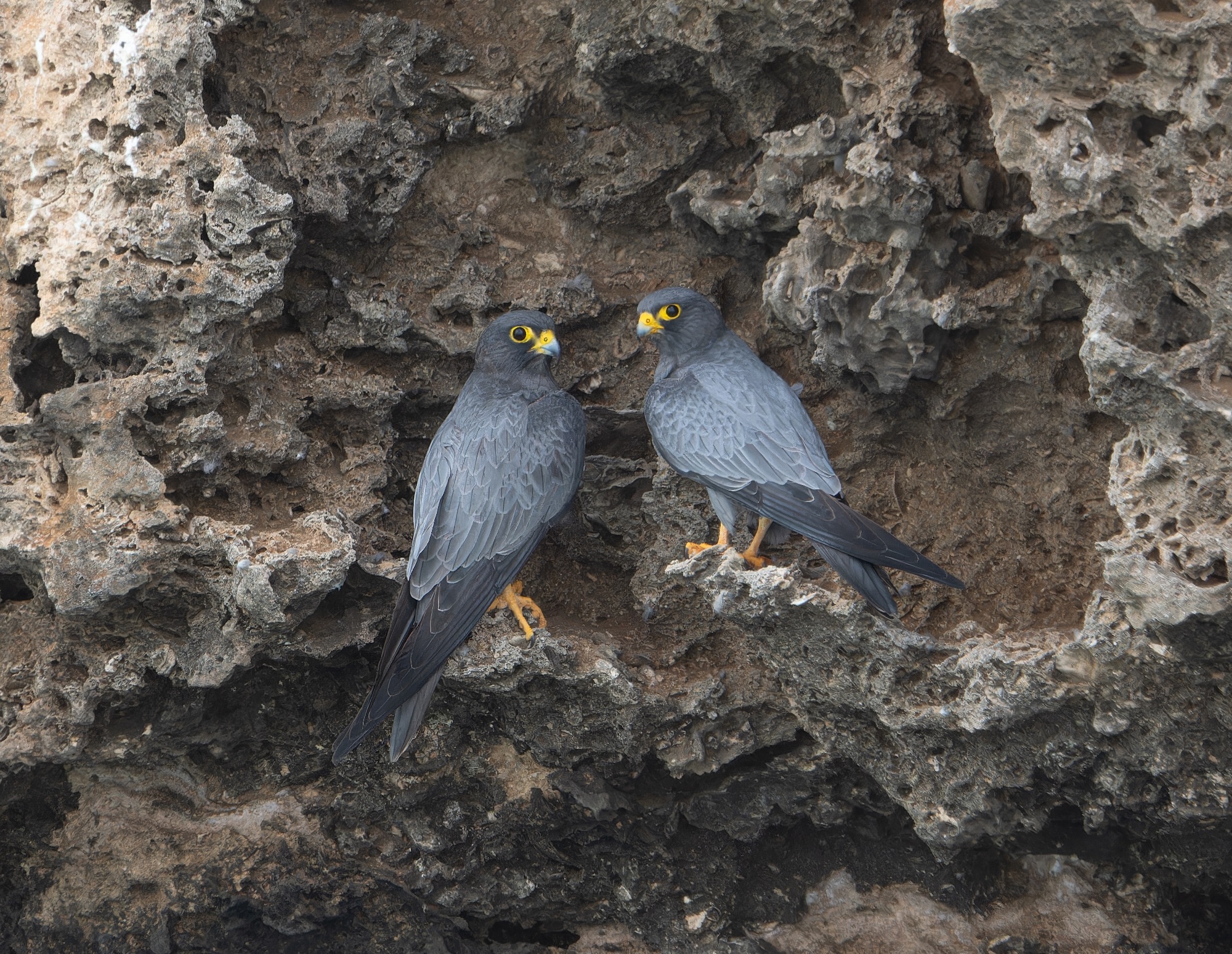


DAY 8: AL SAAD LAKE – ABU ARISH – EITHER MANGROVES - JIZAN
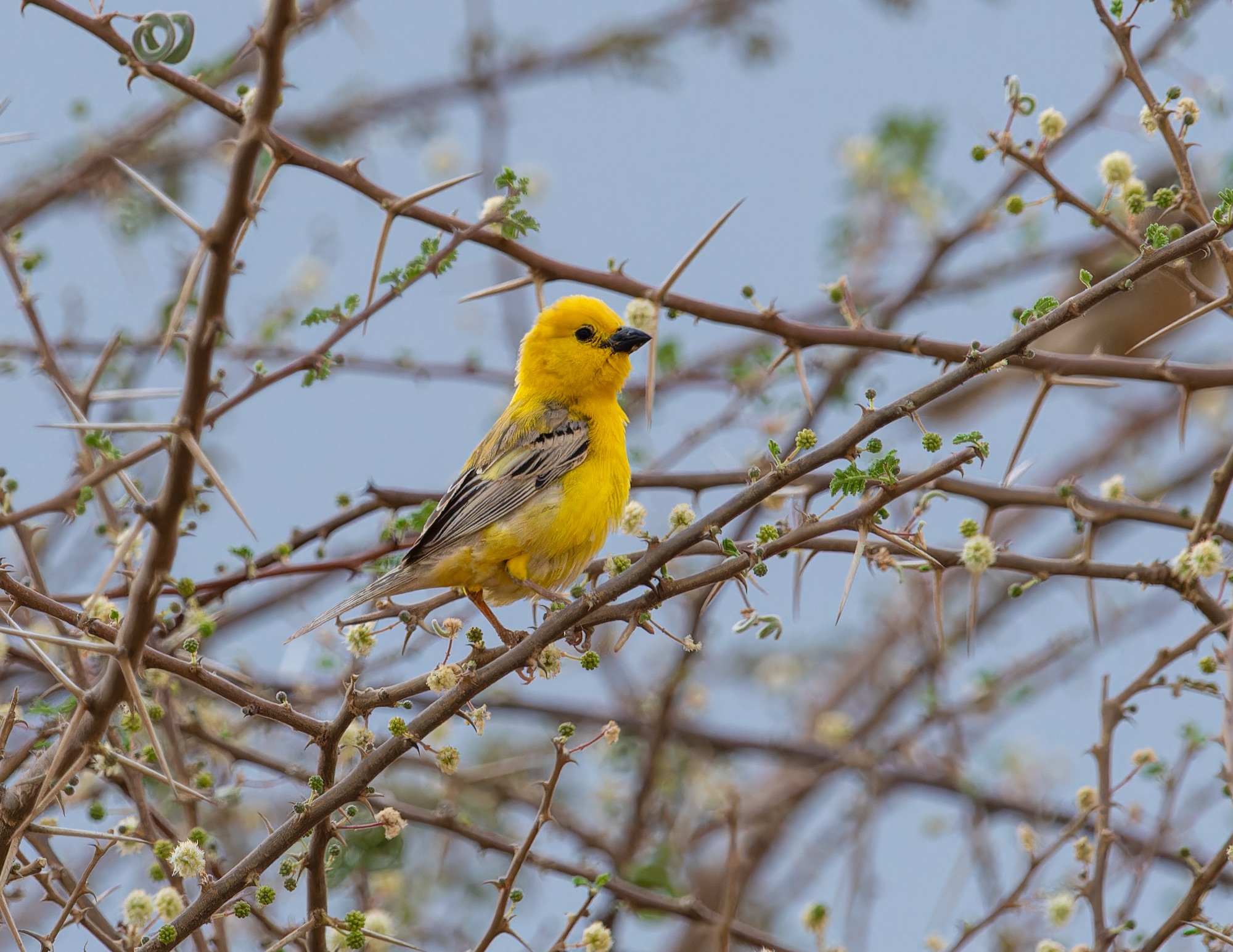
Fantastic to have a later start at 6am, but Al Saad Lake is only 25 minutes from the hotel in downtown Abu Arish, the swanky 'noisy neighbour' to Jizan. Once at the lake we decided we wanted to spend an hour scanning from the viewpoint before going in search of the tricky,elusive & nomadic Arabian Golden Sparrow. Well, it was fantastic to see 4 Wire-tailed Swallows still here, after being found last month when it was a new bird for Saudi Arabia.
There were many birds here and it was all very exciting with a flock of Whiskered and White-winged Terns, Glossy Ibis, Purple Heron, Yellow-billed Egret, 50+ Black-crowned Night-Herons, Nile Valley Sunbirds and lots of other commoner species. Our only wildfowl were here too with Northern Pintail and Shoveler.
The we drove to a few sites around Abu Arish searching the the sparrow....... nothing. And it wasn't looking too promising tbh. After calling back in to the hotel for breakfast that Mrs B had prepared we set off to check more sparrow sites (still without any joy) before heading to the farm fields of Sabya. Here we had Singing Bushlark and discovered a puddle with several races of Western Yellow Wagtail present: a stunning lutea, thunbergi, beema and flava.
There was also Black-winged Kite, Steppe Eagle and Long-legged Buzzard, as well as several Black Bush-Robins. But no sparrow. So time for a change and we drove 30 mins north to Either Mangroves, where the 'Mangrove' Reed Warbler duly obliged after a bit of wading to get closer to the mangroves with a slow incoming tide, and also seeing Clamarous Reed Warbler and a Little Bittern. Plenty of shorebirds were around the mudflats including some cracking Broad-billed Sandpipers, Tibetan Sandplovers, Terek Sandpipers and more. Over in the park migrants were found such as Eurasian Wryneck, Isabelline Wheatear, Common Chiffchaff and Red-backed Shrike...
It was then that we met Martin Kennewell and his group from BirdTour Asia who had earlier in the day found a colony of Arabian Golden Sparrows. THE SPARROW!! They duly gave us the location and we hotfooted it an hour or so north where we found the sparrow right beside the road where we parked. And we spent a good hour watching and taking photos of these awesome birds. there were several nests and maybe 30 or so individuals coming and going, and a few seemed to be drinking sap leaking from one of the acacias.
What a relief this was and we were still celebrating on the 90 minute drive down to Jizan.
it was then that things got interesting.... A huge storm hit us, starting with high winds and a massive sandstorm that reduced visibility to just a few metres. it was scary and we trundled along at 30kph for a long time. And then it started raining very heavily. Lovely! Anyway, the fuel gauge needle had been on red for a good while and we hadn't passed any gas stations until, finally, we reached one, Phew! Just in time. But they were closing so we had to continue! The storm had eased by now and we reached another gas station and thankfully they were open and we got a full tank. The only thing was it seemed to be one of the few gas stations in Saudi that didn't take credit cards... and none of us had any cash! What!!? Fortunately we could change US dollars in the supermarket here (thanks Stefan!) and we were on hour way, just another 15 minutes drive to our apartments in glitzy Jizan. What A day!!



DAY 9: JIZAN - CORNICHE PARK

So this was it, the final push. One last spot of birding on what has proved to be a top trip. So we headed down the coast from Jizan to the usual spot to tick Lesser Flamingo for the trip. There were a few Lesser's amongst about 70 Greater Flamingo's feeding at the edge of the mangroves but we were slightly more interested in finding the 'Mangrove' White-eyes here and actually found a few straight away. Currently just a race of Abyssinian White-eye and i'm not sure it will ever be officially split to be honest..... But who knows? There was also a bunch of shorebirds that included Pied Avocet, Tibetan Sandplover, a Common Snipe, 2 Terek Sandpipers, a few Wood and some nice breeding-plumaged Curlew Sandpipers, 5 Little Stints and plenty of commoner shorebirds. But back in the mangroves, the Common Reed Warbler or Mangrove Reed Warbler, or whatever you want to call it because it will never be split in a month of Sunday's was pretty common here, and it was apparent there had been a fall of Willow Warblers as we estimated nearly 30 were present in the mangroves. There was also Spotted Flycatcher, a couple of Red-throated Pipits mooching nearby, a pair of Clamorous Reed Warblers, Common Redstart, Northern Wheatear and, of course, plenty of Blackcaps. Our best find was a few Black Terns loafing on the mudflats - something of a rarity here.
Just a little further down the road are some huge mudflats choc-full of shorebirds and it was really pleasant just to scope the throng of birds. Broad-billed Sandpipers were numerous, masses of Tibetan Sandplovers were present, a couple of Crab-Plovers were along the tideline, a Gull-billed Tern was roosting on the flats, and it was generally a fun time just scanning. Just what birding is all about.
Our last stop was at Corniche Park and in hindsight, it would have been good to come here first thing. Hey-ho. Well, it was a really exciting couple of hours despite the heat and there were plenty of migrants around. In all we recorded 9 Red-backed Shrikes, 3 Isabelline Shrikes, 3 Masked Shrikes, 3 Eastern Olivaceous Warblers, 5 Marsh Warblers, a Great Reed Warbler, 9 Willow Warblers, 4 Garden Warblers, 5 Barred Warblers, 2 Black Scrub-Robins, 5 Rufous-tailed Scrub-Robins and 2 Thrush Nightingales. A pair of Grey-headed Kingfishers were also here and looked mighty fine in the crisp sunlight and 5 Abdim's Storks patrolled the grounds. Not too shabby huh..? it left me feeling like we needed more time to bird the area as it's so good. In fact, i've felt like that at most places we've been to on this tour..... Just a little more time needed..... Just a little more time needed.....
And that was us done. Back to the mighty fine apartments for a refreshing shower, packing and lunch freshly prepared by Lynzi. We dropped the rental cars off at the airport and a short flight took us back to Riyadh where we said our goodbyes and headed off in different directions back to the UK, Netherlands and Sweden. Thanks to a fantastic group for their excellent birding skills, perseverance, good humour and patience for making this a great tour.



BIRDLIST TO FOLLOW...........

